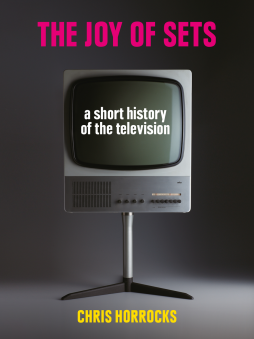
Additional Information
Book Details
Abstract
It is a modern activity, one of the primary ways we consume information and entertainment, something we’ll do over dinner, at a bar, or even standing on the street peering into a store window—watch TV. Many of us spend countless hours in front of the tube, and even those of us who have proudly eliminated it from our lives can probably still rattle off the names of today’s most popular shows. But for as crucial as television viewing is in modern culture, the television set itself, as a ubiquitous object in our environment, rarely captures our attention—turn one off and it seems to all but disappear. In this book, Chris Horrocks tells the story of the television set, exploring its contradictory presence in our lives as both a material object and a conveyor of illusory images.
Horrocks begins in the nineteenth century and television’s prehistory as a fantastic, futuristic concept. He follows the television’s journey from its strange roots in spiritualism, imperialism, and Victorian experiments in electro-magnetism to the contested accounts of its actual invention, looking at the work of engineering pioneers such as Philo Farnsworth and John Logie Baird. Unboxing sets all across the world, he details how it arrived as an essential consumer product and began to play an extraordinary role as a bridge between public and private life. Horrocks describes how the console and cabinet themselves expressed status and good taste and how their designs drew on cultural phenomena such as the space race and the avant-garde. He discusses how we have both loved it for what it can provide and reviled it as a sinister object literally controlling our thoughts, and he shows how it has figured in other cultural realms, such as the work of artists like Wolf Vostell and Nam June Paik. Finally, Horrocks laments the death of the cathode ray tube and the emergence of the flat-screen, which has reduced the presence of the television as a significant material object. Altogether, The Joy of Sets brings this most elusive object into crystal-clear critical and historical focus.
"Television, reveals cultural historian Horrocks in this compact chronicle, has tangled roots. . . . Along with sets, from Baird’s 1928 ‘Noah’s Ark’ televisor to today’s ultra-thin screens, Horrocks examines the technology’s military uses, the ethical furor over content, and its uses as a symbol in art, film, and literature."
— Barbara Kiser, Nature
“Horrocks offers a glimpse into how television sets developed from the meeting between technology and culture, becoming both familiar and alien objects in our lives. He asks that we look more closely at them and, in doing so, see them afresh. At a juncture when the future of the television set is being called into question with the arrival of smaller, portable screens, this is a timely contribution. Dotted with interesting vignettes, The Joy of Sets is a wide-ranging and well-researched book, which provides an unconventional perspective on TV.”
— Times Higher Education
"Television started as a dream of nineteenth-century science fiction. It took its place in the twentieth-century home, and became a fixture of family life and a transformative cultural force. Today, televisions are both less visible and more present than ever, thanks to screens on our walls and in our pockets. Horrocks traces the cultural history of the television set in The Joy of Sets."
— Nathan Bierma, New Books Network
Chris Horrocks is a filmmaker and associate professor in the School of Critical Studies and Creative Industries at Kingston University. He is the author of several books, including Cultures of Colour and Genteel Perversion.
Table of Contents
| Section Title | Page | Action | Price |
|---|---|---|---|
| Cover | Cover | ||
| Title Page | 3 | ||
| Imprint Page | 4 | ||
| Contents | 5 | ||
| Introduction | 7 | ||
| 1. From Fantasy to Physics | 11 | ||
| 2. Inventing Television | 31 | ||
| 3. Television at War | 58 | ||
| 4. Consuming the Receiver | 73 | ||
| 5. Alien Television | 99 | ||
| 6. Space Ship, Black Box, Flat Screen | 125 | ||
| 7. Art Against Television | 155 | ||
| Epilogue: The Ends of Television | 177 | ||
| References | 193 | ||
| Bibliography | 208 | ||
| Acknowledgements and Photo Acknowledgements | 214 | ||
| Index | 216 |
